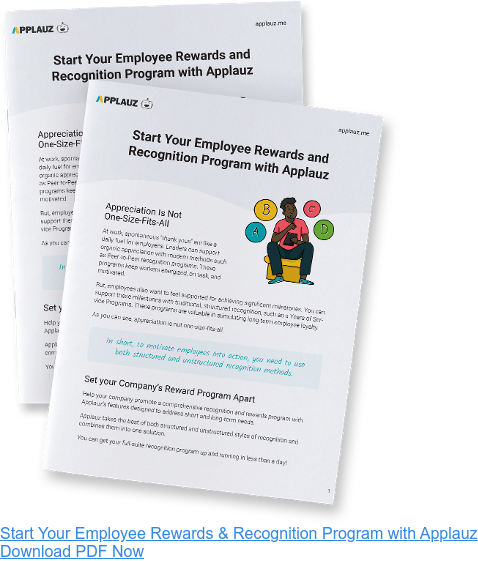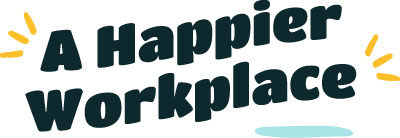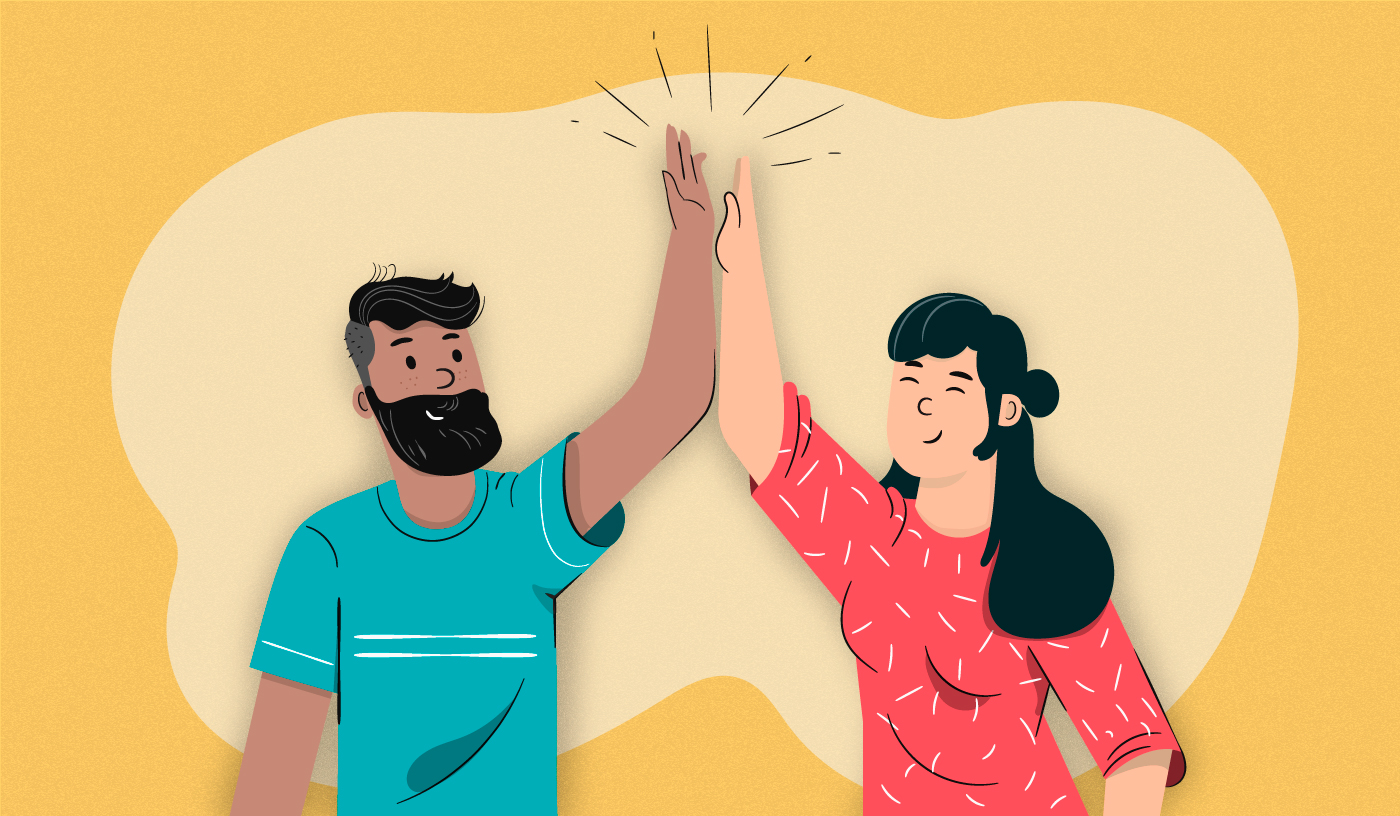Employee rewards and recognition are a critical part of an employee engagement strategy.
In other words, recognition is essential to drive employee engagement.
This complete guide covers all the necessary steps for you to start an employee recognition program – from start to finish.
These ideas will help you start a program that follows best practices and reflects your company's DNA.
Feel free to view the table of contents and jump to the most relevant section.
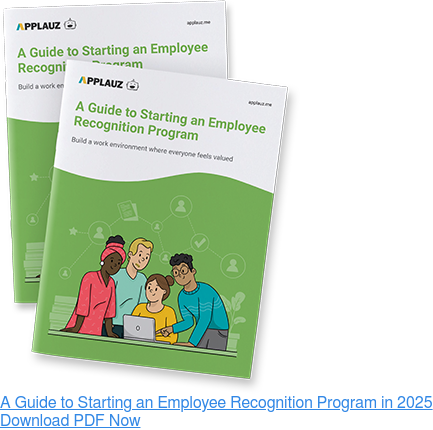
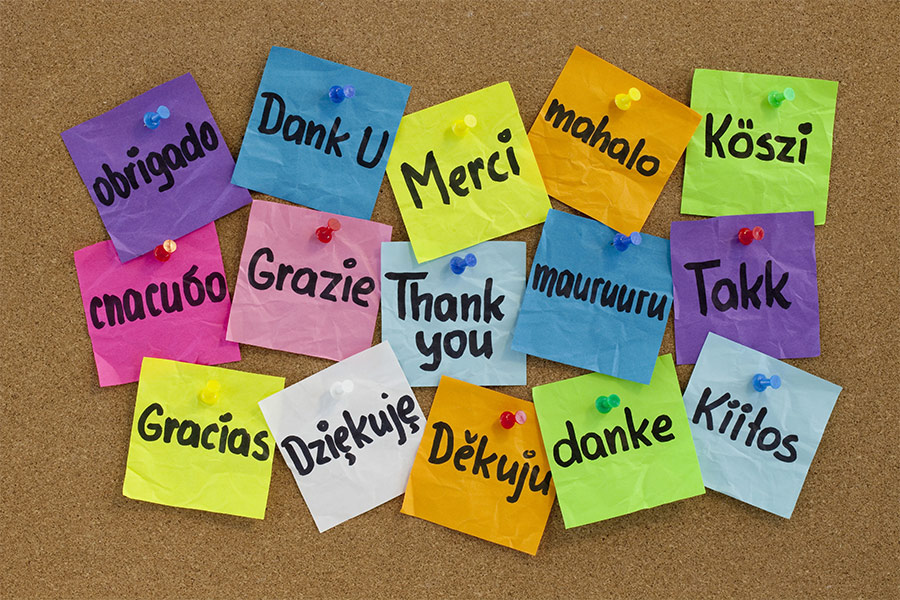 Employee Recognition: 4 Common Myths
Employee Recognition: 4 Common Myths
When people express their appreciation for us, it’s a great feeling. Many of us have experienced the power of gratitude first hand. So we know this to be true.
Still, many leaders are hesitant to deviate from traditional methods of employee recognition. Or worse, unwilling to invest in recognition programs altogether.
This skeptical view comes from misunderstandings about the value of rewards and recognition in the workplace. Organizational psychologist Adam Grant, who often says that he studies how to make work “not suck,” shared that we tend to dramatically underestimate the power of appreciation.
These faulty beliefs hold businesses back from investing sufficient time and resources into formal recognition. As a result, these biases prevent companies from building great employee recognition programs.
Let’s expose some of these common misunderstandings, so you can start building a thriving recognition program.
Myth 1: Compensation is the only employee motivator
Many leaders believe that salary is the most important external motivator for employees. Therefore, recognition and reward programs are unnecessary or should require very little investment of time and resources.
Recent research shows the questionable nature of this assumption. One study surveyed employees who voluntarily left a company. A whopping 79% reported that the primary reason they left was not for more money, but because they did not feel appreciated.
Other psychological studies on motivation at work show employees do desire other forms of external reward. In one study, software salespeople were willing to forgo almost $30,000 in bonuses for a gold star on their business card signalling they'd made "President's Club."
The results of these studies suggest that once workers are satisfied with their wages, they look to other aspects of their job to motivate them.
For example, Gabriella Rosen Kellerman, Harvard-trained psychiatrist and author of “Tomorrowmind,” says that a sense of mattering is crucial for employee motivation. “It might not inherently be life-changing, but just knowing that we’re being of service to another human being is so meaningful,” she told CNBC Make It. “And part of what we need managers to do is to narrate that story of mattering in an effective way.”
In short, employees need adequate income to fulfill basic needs. However, compensation isn't as effective at fulfilling other desires, like a need for respect and appreciation.
Myth 2: Program administration is time-consuming
Business owners believe that employee recognition is time-consuming — for administrators and managers. For instance, assuming that senior leaders and managers are too busy to participate in the practice, there are more important duties to take care of.
The best employee recognition software platforms, like Applauz Recognition, are the key to address this concern. Rewards and recognition software (more on this topic later in this guide) help with the task of running a recognition program. Moreover, many of these tools also help with day-to-day as they provide a platform for peer recognition to happen.
Once recognition becomes an organic part of everyday communication, leaders will realize that it takes a few minutes to give proper recognition. And the long-term payoff is high. In short, recognition is a low-cost, high-impact action.
Myth 3: Recognition programs have an unreliable ROI
Executives may be reluctant to invest time and money into employee recognition. Because they believe a predictable ROI can't be identified.
But, time and time again, studies show the power of gratitude and appreciation has over human motivation. This increase in positive feelings and motivation translates into bottom-line gains for businesses.
For example, one study has shown that a simple expression of thanks by someone in authority led people to be 50% more productive!
And according to a frequently cited Gallup report, on average, engaged teams experience a 40% decrease in voluntary turnover. Statistics like this prove that the return on investment of recognition is more predictable than leaders assume!
That said, the ROI of recognition is not instant; a real culture of recognition takes time to cultivate. In other words, investing in recognition is a long game. But when executed correctly, a recognition program will have profound effects on employee morale, productivity, and retention.
Pro Tip: Check out our ROI Calculator to calculate the ROI of employee engagement for your business!
Myth 4: Recognition is
an IOU
This mindset is one of the most harmful to a young recognition program. Allow us to explain. Although employee recognition does have a positive impact on the bottom line, that shouldn't be the primary goal of a recognition program. In short, recognition cannot be viewed as an IOU.
Psychologist Paul White supports this idea in his popular book on recognition in the workplace. He says that when employees think management uses recognition as a tool to increase productivity and profits, it produces distrust.
As a result, shallow words of praise are exchanged as a performance to "go through the motions" of the program. Ultimately, recognition is perceived and generic and fake. This outcome undermines the entire goal of the program. Bottom line: leaders will only reap the tangible benefits of recognition if employees perceive praise as genuine and sincere.
 What is Employee Recognition
What is Employee Recognition
Explaining these myths is the key to building a strong recognition program. In other words, for a recognition program to truly flourish, leaders must genuinely believe in the value of gratitude and appreciation at work.
Now that we have believers on board, we can move to the next level and ask — what is employee recognition?
Appreciation and praise are a fundamental part of the employee motivation puzzle. But when you put this idea into practice, you will quickly realize that recognition comes in all shapes and sizes.
Some gestures of recognition are great at boosting short-term motivation. In contrast, others are better at promoting long-term loyalty. Leaders must recognize the mix of both short-term and long-term needs that motivates employees into action, and a strong culture of recognition should address both these needs.
Let's look at the two main recognition types so we can see how each addresses a different kind of psychological need.
Structured vs. unstructured recognition
Structured
Structured methods of recognition are more traditional and often take a top-down approach. Meaning, managers or senior leaders offer recognition to their employees.
We label this approach to recognition as “structured” because it is often in the form of programs that are formal or ceremonial. Recognition is expected and happens at predictable times. Also, all employees are included and receive recognition.
Structured recognition is important. For example, celebrating work anniversaries is an important way to make employees feel valued and appreciated.
Unstructured
Unstructured recognition is a relatively new concept. But it's quickly becoming a popular employee recognition method. Companies understand the importance of regular praise for employees to feel valued at work.
In these modern recognition practices, leaders intentionally create space for spontaneous gestures of appreciation. Coworkers are encouraged to offer each other recognition. Praise is not something only managers give to employees, instead, everyone partakes and gives each other recognition.
Unstructured methods can take many forms; they can be inexpensive to administer or need a small budget. An example is an email recognizing the week's top performers, a recognition channel on a chat tool, or a budget distributed to reward employees for accomplishing necessary tasks.
Ultimately, the goal of this unplanned form of recognition is to weave appreciation into daily life. Simply put, to "fill in the gaps" between structured recognition, so employees consistently feel valued.
 Why is Employee Recognition Important
Why is Employee Recognition Important
Author Dr. Paul White expresses in his book "The Vibrant Workplace," the true value of recognition is that appreciation for colleagues communicates respect and value for them. In other words, it's important to remember the real purpose of recognition is not profit. But instead, making employees feel fulfilled and valued.
Leaders should not focus solely on profit as the main objective of a program. When a recognition program is seen as a means to an end, less effort is put into the details. For example, recognition is often impersonal and generic. As a result, the program will have less impact.
Bottom line: Authentic appreciation is required.
If you want to support authentic appreciation, focus on the following intentions (rather than profits) as your program's primary goals.
Communicate to employees they are valued
Appreciation is about truly seeing someone for the value they bring to the team, not just acknowledging their output. Employees don't want to be viewed as "work units" whose value is only derived from how much they produced. Instead, appreciation should be about recognizing your employees as people with unique abilities, personalities, and talents. In short, it's about making employees feel special.
Show employees why their work is important
Worrying about your job is the first step to feeling disconnected from work. In short, doubting if your work makes a difference gives rise to feelings of detachment. This is especially true in large organizations where employees are more prone to feeling like another cog in a wheel. The reality is, everyone's role is essential to a bigger picture. But, when bogged down in the daily grind, employees often forget where their contributions fit in. Recognition is important because it helps employees zoom out — reminding them why their work matters and how they make a difference in the bigger picture. Ultimately, making them feel more connected and satisfied with their work.
Create a collaborative environment
When you trust your coworkers and know that they have your back, it's a great feeling. By contrast, it's toxic to feel like your team is always in competition, or worse, secretly rooting against each other. This cold environment leaves employees feeling miserable and burnt out. Employee recognition comes in to bring people together with support and respect. As a result, the opposite type of atmosphere is created, one that is warm, friendly, and collaborative.

 Employee Recognition Ideas and Examples
Employee Recognition Ideas and Examples
In this next section, we will look at concrete examples of what the different types of employee recognition look like in motion, in the form of both structured and unstructured programs.
These employee recognition ideas can help you build a more engaged workplace.
Structured Recognition Programs
The Employee of the Month
The employee of the Month is a traditional recognition program. In this program style, an employee is selected each month — by peers or leaders — as the top employee. Although these programs are standard, they can breed envy among the workforce if they are executed poorly.
For example, resentment grows if leaders don’t express precise criteria for employee of the Month. In short, if it seems like the employee of the Month is favoured at random, this gives the impression the program is a “popularity” contest. This type of program creates a competitive environment. Ultimately, competition should not be the goal of a recognition program.
Yearly or quarterly reviews
Traditionally, both positive praise and constructive feedback are given to employees during formal reviews. These meetings occur a few times per year. That said, if managers make a point to offer personalized and sincere recognition during these meetings, employees will undoubtedly benefit from it. This practice is better than offering no recognition at all.
However, this method of recognition has one major shortcoming: it's scarce. Full-time employees require timely praise. For example, if an employee or team delivers a tough assignment, waiting a few months or even weeks to say "good job" is not ideal. Employee recognition must be offered more frequently. A handful of times per year is not enough.
Years of Service Awards
Formal work anniversary celebrations are a common type of recognition program. These ceremonies are important because they communicate to employees that loyalty is valued. The celebration of service awards serves a particular purpose — to thank employees for their dedication.
The major pitfall with service awards is the majority of these programs start at the 5-year mark. Employee tenures are becoming shorter and shorter. As a result, this is not enough to boost everyday morale and motivation.
Bottom line: A Years of Service program is a good start, but leaders must recognize everyday efforts too!
Top Performance Awards
This style of recognition program is like an awards ceremony. The goal is to recognize and reward top performers for their achievements. These ceremonies are typical in larger organizations in results and quota-driven industries, like sales, for example. A top salesman in a particular region is awarded a trophy or plaque for their excellent results.
Summary of structured programs
- Planned: happen at predictable times.
- Infrequent: recognition is given only a few times per year.
- Top-down: managers give praise to employees.
- Formal: part of an official organizational process.
Bottom line: Structured programs are essential. These ceremonies give employees something to look forward to—for instance, the honour of receiving a gift for their 5th anniversary. But, the major disadvantage of these programs is they are so infrequent. also, structured recognition is often generic. Leaders give employees blanket "thank you" and seldom celebrate workers for a specific achievement or skill.
Unstructured Recognition Programs
Peer-to-Peer recognition
Many companies are enhancing their recognition programs with a method called Peer-to-Peer recognition.
This form of recognition is frequent and flexible. Coworkers can offer each other appreciation anytime using digital tools like Applauz Recognition,
This recognition style achieves two important things; first, it allows workers to recognize the fly. Second, it helps showcase employee's hard work to the rest of the team and company. Peer-to-Peer recognition is perfect for filling the space between recognition celebrations like work anniversaries and yearly reviews.
Gamified recognition
Gamified recognition is becoming more popular. Digital recognition tools supports these programs.
These tools allow workers and managers to award badges, trophies, or points to each other for a job well done. This type of program creates a “gamified” style of recognition. These programs can be highly motivating and appreciated by younger generations in the workforce.
Celebrations of important life events
For modern recognition programs, managers are given a budget to celebrate important employee milestones — both personal and professional.
For example, managers will make the time to celebrate employees for life events like birthdays, weddings, and children's birth.
Modern workers spend a great deal of time at work and form close bonds with their colleagues. Over time, organizations acknowledge the benefits of celebrating and recognizing these major life events for their employees.
Summary of unstructured programs:
- Flexible: there is no set time to give praise, it’s more spontaneous.
- Frequent: recognition is a regular practice.
- Multi-directional: praise is given between peers.
Bottom line: Unstructured recognition methods are necessary because they focus on personalized and spontaneous appreciation. Unplanned, meaningful praise helps boost everyday morale. But, the main drawback is too much flexibility. Giving employees too much choice about when and how to provide recognition may result in misuse of the program. For example, workers may give praise to only their friends. Still, if a program is thoughtfully managed, misuse of the program can easily be avoided.
Summary: key differences
Unstructured recognition: Recognition is something everyone in the business regularly takes part in.
Structured recognition: Recognition is an action only managers or leaders take a few times per year.
 How to Build a Culture of Recognition
How to Build a Culture of Recognition
Now you should be aware of what a recognition program looks like in practice. However, it’s important to remember that a singular recognition method isn't a cure for employee motivation issues.
Imagine only getting words of appreciation from your friends and family on your birthday. How would such sparse gratitude make you feel?
First off, you would certainly look forward to your birthday. You would also feel neglected the other 364 days of the year.
Similarly, employees do appreciate being recognized for their years of service or during their yearly reviews. Still, people need to feel the power of gratitude and appreciation more regularly to boost their daily motivation.
Both recognition methods should be present to create a culture of recognition
Remember the "goals of a recognition program" from the beginning of this article?
- Communicate to employees they are valued.
- Show employees why their work is important.
- Create a collaborative environment.
Businesses need to blend both structured and unstructured methods of recognition to meet all three goals.
Think of unstructured recognition as a daily fuel. It serves to keep employees energized, on task and motivated. In short, spontaneous recognition is a regular reminder to workers that they are essential. Moreover, it helps create a collaborative environment every day.
On the other hand, structured recognition is a great long-term motivator. For example, the celebration of work anniversaries is vital to convey to employees that your business values their dedication. In short, traditional recognition is about fulfilling deeper meaning and purpose.
Employee recognition program tips
Now you know that recognition (both unstructured and structured) can take many forms. But leaders must be careful to include some key best practices for any program to be successful.
These ingredients are the foundation of a strong program.
In short, including these best practices will increase the odds of success of your program. So, if you are launching a recognition program or already have one in place, be sure to include these basic elements to maximize your program's value.
Structured Recognition
- All are involved: For a structured program to thrive, all employees must be recipients of recognition, for example, for their work anniversaries or yearly reviews. If a program is in place and someone is left out, it can lead to resentment.
- Timely: For structure recognition to have the highest impact, ensure that it is timely. This means employees should be celebrated on their milestone date or very close to it.
- Personal: Many well-intentioned programs end up failing because managers do not take the time to personalize the reward experience. Ensure that employees receive either verbal or written messages of appreciation that highlight their unique contributions.
- Reward options: If you want to modernize a traditional program, make sure to select a provider that offers employees a catalogue of gift options on their anniversary or other celebrations.
- Gifts that are high-quality: To take your program to the next level, make sure your reward provider features high-quality gifts. High-quality rewards make your program memorable and stand out.
Unstructured Recognition
- The program is accessible to all (but not forced): Peer recognition is an integral part of a modern program. But remember, managers shouldn't force workers to give others recognition; praise should always be sincere.
- Egalitarian: While peer recognition should not be commanded, it's important to monitor your program to ensure that employees aren't only giving praise to their friends.
- Personal: Words of recognition that are personalized have the highest impact on employee morale. Train employees to understand how to give sincere praise. Check out the section below for more!
- Tangible gifts are a plus: Selecting a program provider that features a marketplace with gift cards, or material rewards is a great way to take your program to the next level.
 Employee Recognition Program Best Practices
Employee Recognition Program Best Practices
Starting a recognition program requires several steps. Once you arrive at the end of the development process, and the framework is set up, the job is not quite over yet. Your recognition program must still be rolled out to your workforce.
Suppose you want your recognition program to have the highest value and impact. In that case, it needs to be "marketed" to your company.
The goal is simple: get everyone to recognize this new program's value and what to expect.
In this section, we will describe a few best practices for the launch of a recognition program. If you follow these steps, your workforce should get excited and eager to engage with the program.
1 - Approach the launch like any other businesses objective
Leaders must approach the launch of a program, like any other business goal. As such, before you make the official announcement, be sure to have the following details on paper.
The goal is to create benchmarks today so that you can measure the success of your program tomorrow.
Define the program's success metrics
The goal of a recognition program is to make employees feel valued. But how can you measure — in other words, put a concrete number — to something so vague as to how “valued” your employees feel.
Here are a few common metrics and methods that leaders can use to measure the success of the program:
Select a few key people
A strong program needs champions. These individuals help broadcast the message and uphold the values of the program. The involvement of stakeholders is crucial to your recognition program's success.
You should equip stakeholders with key details before the official announcement of the program. The program champions should know why recognition is important and how it drives employee engagement. Also, they need to know what is expected of them. Make sure to highlight why their part is essential in the success of the program's roll-out.
2 - Raise awareness and promote the program
Now, the best part begins— the big announcement!
We recommend taking the following steps to ensure everyone in your company is aware of the program and understand its value.
Write a short “press release” message
Announcing a program involves getting a lot of people on board. Not to mention communicating important information. To ensure the transfer of information is smooth, we suggest having a written message ready to send.
This written statement should resemble a press release. The goal is to summarize the upcoming program and set expectations for participation.
Your program launch message should always include the following pieces of information:
- An introduction to the program: In the introduction, you must answer the 3 W's: What, When and Where. For example, "The Happy Company is proud to announce the launch of a length of service program on October 1st, 2021".
- The goal of the program: The second paragraph should cover the "why" of the program. For example, "The goal of this program is to recognize our valued employees' dedication and commitment."
- The recipient's role in the program: The third paragraph outlines the role of the person receiving the message. For example, suppose it's intended for an employee. In that case, you can say, "In this new program, you will be rewarded for your length of service for your 3rd, 5th, and 10th, milestone anniversaries."
- Brief about what can be expected (and at what time): Lastly, you should briefly describe what they can expect. For example, "On the day of your work anniversary, you will receive an email from your manager. The email will contain all the details on how to purchase your gift from a rewards catalogue."
We suggest you write one message and modify it for different audiences. Remember always to keep the tone of your message upbeat. The goal is to get people excited and eager to be involved.
When in doubt err on the side of overcommunicating
As an HR professional, you're likely familiar with the reality of HR emails conveniently getting "lost" in people's inboxes. That's why for a recognition program rollout, it's advised HR always over-communicate.
In practice, this involves sending out more than just one email to announce the program. Depending on your business's size, it can also entail making an in-person announcement to the entire company. Or, at the very least, ensuring that managers are communicating the news face-to-face to their teams. Bottom line: At least one in-person announcement is crucial.
It can take a little bit of encouragement to get people involved in the program in the early days, so simply making one announcement via email is not enough. Planning to over-communicate is always best practice to make sure the news sticks and is at the forefront of everyone's mind.
Plan for direct communication with managers
Managers are the people who initiate recognition and encourage their team members to also get involved. They are the champions of your company's new recognition program. As such, department managers will play a critical part in promoting the program and ensuring its success.
This is why all the initial communication should be tailored for department managers. This means a separate announcement email should be written just for them. This way, they can clearly understand their distinct responsibilities within the program.
Don't only make one generic company-wide announcement. Managers should understand the importance of their role and how their efforts will be critical to the program's success.
Inform your key players
Whether your key players are senior leaders or department heads, you should inform these people before the big company-wide announcement.
Inform your program champions in two ways: sending them the press release message and hosting a brief in-person (or virtual meeting).
The meeting with key players is critical. This discussion gives you a chance to answer any questions or clarify any points that were not clear in the written message.
Most importantly, stakeholders should leave the meeting equipped with all the knowledge they need to make the launch a success.
Ultimately, stakeholders are tasked with passing along the information to their teams.
Make the big announcement!
The final step is for the HR department to announce the launch to everyone.
At this point, employees already know about the program as the stakeholders have informed them. As such, receiving an official announcement email from HR should further solidify what they already know.
To that end, we recommend making the big announcement with a company-wide email. This email is based on your press release message. The goal is to introduce the program and explain what employees can expect.
3 - Monitor program adoption & usage
Keep an eye out on the adoption rate
Most recognition platforms include features that enable administrators to have a birds-eye view of participation data. This means you can get a concrete picture of how many employees are participating and at what rate.
By looking at this information, you'll be able to assess whether your HR communications and rollout efforts are yielding results.
On the other hand, if you roll out your recognition program and don't keep an eye on participation data, you will not understand if your company's employees are actually using the program or maximizing its value.
Bottom line: in the early stages of the rollout, keeping an eye on basic data is critical to the long-term success of the program.
Stay in touch with your managers
To that end, statistics on a screen are essential, but they don't tell the entire story. That's why in the early days of a new program, it's crucial to meet face-to-face with company managers as well. The meetings can be very brief; the goal is to gather feedback and keep the new program at the forefront of everyone's mind.
As mentioned before, some people may be hesitant to take part -- giving recognition and appreciation at work is a soft skill some people need help with! In other words, some people might be shyer than others.
This is why meeting with managers is essential. HR can help managers devise helpful strategies to get maximum employee participation. These efforts will go a long way to help to boost the program's success.
Encourage recognition to be given regularly
The main benefit of Peer-to-Peer recognition is that appreciation can be given anytime. In other words, employees don't have to wait impatiently for a formal review to get positive feedback from their manager. Both managers and coworkers can give appreciation with visibility and frequency.
However, offering regular recognition (in an informal context) may feel new to many people. In short, they might be unsure how often to give praise.
While there is no such thing as giving too much recognition, it's always advisable to focus on quality instead of quantity. In other words, sporadically writing a sincere, heartfelt message is more beneficial than a hollow one to say you did it.
To get managers accustomed to giving recognition regularly, set them up with a feasible goal. Ideally, managers should aim to recognize at least half their team once per month.
 Employee Recognition Software and Tools
Employee Recognition Software and Tools
Many businesses that choose to invest in employee recognition and appreciation do so with the help of a digital recognition tool or software.
For example, a Peer-to-Peer recognition program is an essential tool to help businesses support appreciation. It gives employees a place to recognize each other with greater frequency and visibility.
A recognition software acts as a central hub that employees can log into to share their support and appreciation for each other. Think of it as an internal social media or forum that is private to only your business employees. And there are many advantages to implementing peer recognition software or system.
Here are just some of the ways a recognition tool can help businesses grow appreciation within their organization.
1 - Creates a dedicated space for employees to support and encourage each other
How do employees give each other recognition in your company? Probably through email or chat. Or maybe managers offer a quick “good job” during team meetings. Essentially, appreciation is likely shared haphazardly and mainly in 1:1 meetings.
If you want to support recognition within your company, the most critical first step is to create a dedicated space for appreciation.
This space can be physical or virtual. For instance, creating space can mean periodically hosting "appreciation meetings" or creating a "recognition" channel in your company's chat tool.
However, an official recognition program can take care of that work for you. Peer-to-Peer recognition tools, like Applauz, offer companies a digital platform just like social media where employees exchange appreciation.
Having a dedicated digital space provides a multitude of benefits. Namely, people who might be shyer will feel more compelled to share because the platform creates a “safe space” to express gratitude. Unlike face-to-face interactions, which can be stress-provoking for some, giving recognition through a digital platform will never feel uncomfortable, forced, or awkward. This brings us to our next point.
2 - Gives employees an opportunity to personalize their recognition
Think about how your company managers typically express appreciation to employees. Perhaps they give recognition during formal evaluations. Or maybe they occasionally offer their entire team gift cards and a sweeping "good job, team."
Either way, these popular methods of recognition lack two critical things: frequency, and most importantly, personalization.
For instance, if managers give everyone the same gift card and a catch-all "thank you." It's a nice gesture but lacks meaning. The recognition is not specific to any employee. On the other hand, the type of praise that truly energizes an employee is personal. In other words, employees want to feel seen and valued for what they bring to the table.
That's why a peer recognition program is so beneficial, as it allows managers to give personalized recognition. Also, recognition is written, so employees can reflect on what they want to say and draft a great statement. A bonus: shyer team members will not feel unnecessary pressure to verbally express their appreciation on the spot.
3 - Helps to measure recognition efforts and holds managers accountable
The quality of a manager's recognition is critical. And the hard truth is many employees simply don't feel valued even though their managers claim to give appreciation.
That said, recognition is a major pillar of an employee engagement strategy. So If your business wants to improve employee engagement, HR should have an overview of your business's recognition efforts -- in terms of quality and quantity of recognition.
In other words, without a program, it's difficult (if not impossible) for company leaders to objectively assess how well the company is doing in terms of recognition. That is unless HR sits in on 1:1 meetings or reads every anniversary card. We all know this is never going to happen!
Bottom line: With a peer recognition system, HR has full transparency. And most importantly, it allows you to quantify your company's recognition efforts. As such, your team can oversee which managers are making efforts and spot those who need to step it up. And you can even develop strategies to help managers give richer, more meaningful recognition.
Tips for giving employee recognition with software
For many managers, giving recognition through software is new. As a result, it may feel unnatural, or like you're just "going through the motions." Managers may have a lot of hesitation over questions like:
- What should I say or write?
- How often should I be giving recognition?
- What actions warrant recognition?
- Or, maybe your company is one of those that was ahead of the curve.
Tip 1: Recognize employees at least once per month
Sincere recognition is a powerful tool to boost employee happiness and motivation. However, the effects of recognition on an employee's mood and sentiment are short-lived.
Think about it like this: you couldn’t expect to build a strong relationship because you planned a thoughtful birthday celebration for your spouse only one time. Strong relationships are cultivated with small but continuous positive habits, like expressing your appreciation and gratitude for each other regularly.
Similarly, for employee recognition to have a lasting effect, it needs to be continuous.
So how often should you be recognizing employees? Once per month seems to be the sweet spot to maintain engagement.
One particular study found that employees who are recognized at least once per month are 50% more engaged.
Giving monthly recognition may seem like a lot at first. But giving recognition on a digital platform only takes a few minutes. There’s no need to write a novel. Just a few words will mean a lot to a hard-working employee.
Tip 2: Vary the number of Points you award employees
Many recognition software work with a Points system. If you’re using a Points system as part of your recognition program, make sure you are maximizing their impact.
To illustrate, imagine these scenarios:
- Always receiving the same card and 50$ for your birthday.
- Always receiving the same 3% raise at your yearly evaluation.
At first, the 3% raise or the 50$ might be nice. Yet, after receiving the same thing over and over, the gesture will surely start to feel lacklustre and lose meaning.
There are a few reasons for this:
- Variety is very engaging: Unexpected rewards grab our attention. While getting the same reward, at the same time, can feel, well, quite boring. That's why slot machines are designed to vary their payout. But this facet of the human mind can be used to your advantage in giving recognition! Varying the number of points you give makes your recognition not only more sincere (as it reflects the employee’s effort) but it will make the program more fun and engaging for your employees.
- Points should reflect the employee's effort: A raise should reflect an employee's performance. To that end, the number of Points you award should reflect the value of the action you are recognizing. For example, you can recognize a small task with 25 points and a big accomplishment with 200 points. Doing this will make recognition more meaningful as it will be a true reflection of the employee's effort. As a result, your recognition will carry more weight and elicit more positive feelings.
Points systems are a great way to create a fun and exciting recognition program. Points give recognition more weight and create more meaning for both the giver and the receiver. So if you are using Points, make sure the Points you award match the value of the action you are recognizing.
Tip 3: Private vs. public praise
Most recognition tools offer the option of private or public praise. It’s a valuable tool for a purpose, as some employees might not feel comfortable receiving praise publicly.
If your team is smaller, you might already be aware of who those people are. Otherwise, you might want to consider asking people if they feel comfortable with public praise.
As a rule of thumb, most individuals do like public praise on a company’s social feed. Because it feels good to have their peers contribute to the positive feedback by liking or commenting on the post.
However, a smaller portion of people may not enjoy public recognition. Suppose you neglect to spot these people, and you give them public recognition anyways. In that case, your praise may be less effective, as the employee may feel misunderstood. It's always a good idea to quickly check in with your team before you start giving public shout-outs.
Things to consider when shopping for recognition tech providers
With every movement in the HR space, comes a flurry of technologies. And with so many options on the table, it can be difficult to choose the best one.
Each recognition and reward tool is created a little differently. So before you start writing out a list of vendors, it is essential to know your basic "must-haves." Here are a few important things to consider when shopping for recognition software.
Type of recognition you want to support: are you looking to put a structured system like a work anniversary or milestone program in place? Or, are you looking to invest in more spontaneous forms of recognition with a Peer-to-Peer style program?
Budget limitations: What type of budget are you working with. Having a rough budget in mind will help you eliminate options quickly.
Do you want recognition, rewards, or both?: Some recognition software can do both, but not all. So it’s essential to understand this baseline feature of your program.
Private vs public recognition: Having the option for private recognition can be important to some people who may feel shy to receive public praise. Make sure the system you choose supports private recognition if you think your company would benefit from it.
Integration with your current HR tools: If you already have an HRIS in place or a payroll software like ADP, consider looking for software that integrates with your existing tools. This effort will greatly simplify the administration of your recognition program.
Employee engagement features: Consider if your company would benefit from other employee engagement features, like Pulse Surveys or performance management tools.
 Tips for Giving Better Recognition
Tips for Giving Better Recognition
In this guide, we've mentioned several times that personalized recognition is the most impactful.
Why? Because people desire to feel special.
We want to finish this guide by offering you a few actionable tips on providing more powerful words of recognition and appreciation.
Let's look at the difference between these two recognition message examples, so you can see how even a few extra words make a world of difference.
Example 1: "I'd like to thank Cindy for giving me her input on the Gizmo Presentation. She took the time to help our team, and I appreciate it.
Example 2: "I'd like to thank Cindy for offering me her input on the Gizmo Presentation. She has an incredible eye for detail and always offers up creative suggestions I'm confident our clients will appreciate. She's always responsive when we ask for help (even though we know she's busy) we are grateful for her effort!"
Which message would you like to receive from a coworker? I imagine most people would choose the second message!
Of course, a "thank you" or "great job" is always appreciated. But genuine, authentic appreciation should be more precise and tailored to the person receiving it.
When offering recognition remember: 'PEP'
When you're considering offering recognition — either verbally or written — you might stop and wonder if your troubles will make an impact at all.
We've come up with an acronym (PEP) to help anyone learn how to make the most of your words of appreciation.
Using this acronym, you will be sure to provide impactful recognition every time!
- Personal: Recognition should include words that highlight someone's unique character, personality, or skills. In the example above, we can see that Cindy's coworker highlights her creativity.
- Earned: Recognition should be based on merit. Personalized recognition is not necessary for the fulfillment of daily tasks. In the example above, Cindy went out of her way to offer her input, even though it's not part of her normal duties. In this case, Cindy's efforts warrant explicit recognition.
- Process: Ask yourself what this person did differently in the process. What was their unique contribution? What knowledge, skill, or talent did they apply? In the example above, Cindy used her strong eye for detail to give her colleagues feedback.
Final Thoughts
In the past, employee recognition was sparse. Managers focused on praising output or tenure instead of performance and personality.
Modern solutions help companies recognize employees with more visibility and frequency. The end goal is an engaged workforce.
Although saying “thank you” will always be good etiquette, building a strong employee recognition program involves more planning and moving parts.
Hopefully, this guide will help you put your best foot forward on your path to building a strong program and a culture of recognition in your workplace.
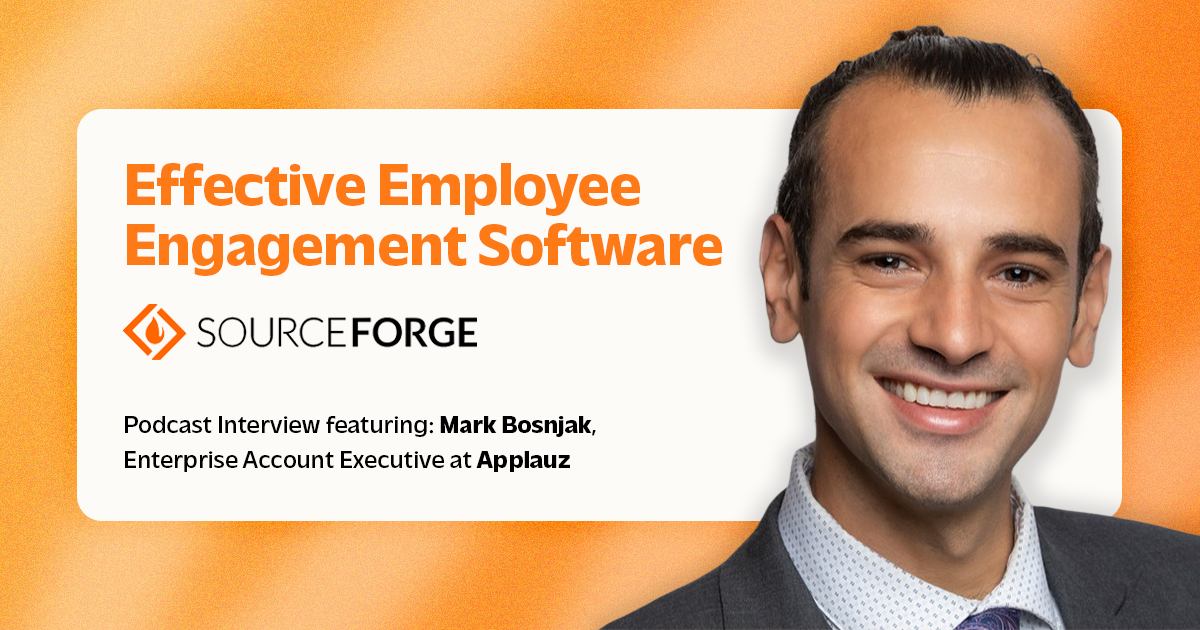 Applauz on SourceForge: Effective Employee Engagement Software
Applauz on SourceForge: Effective Employee Engagement Software


